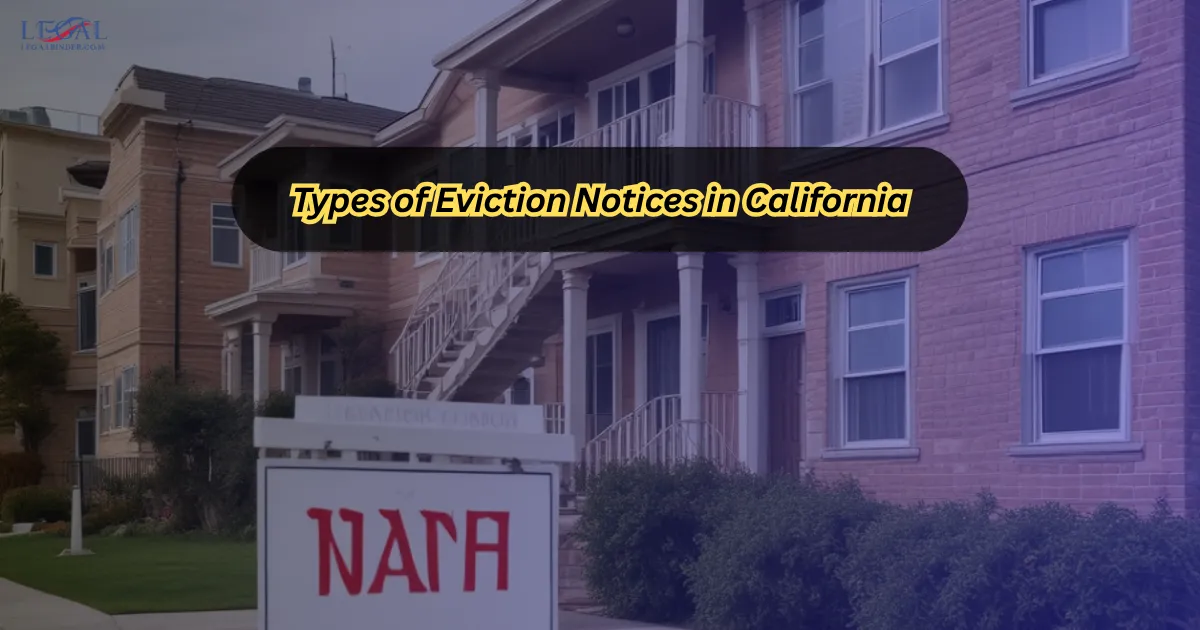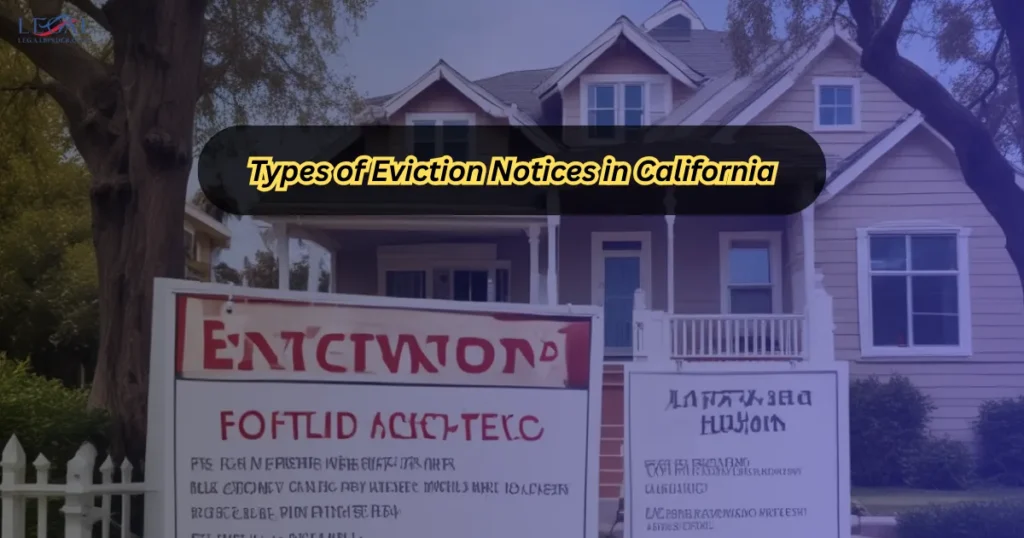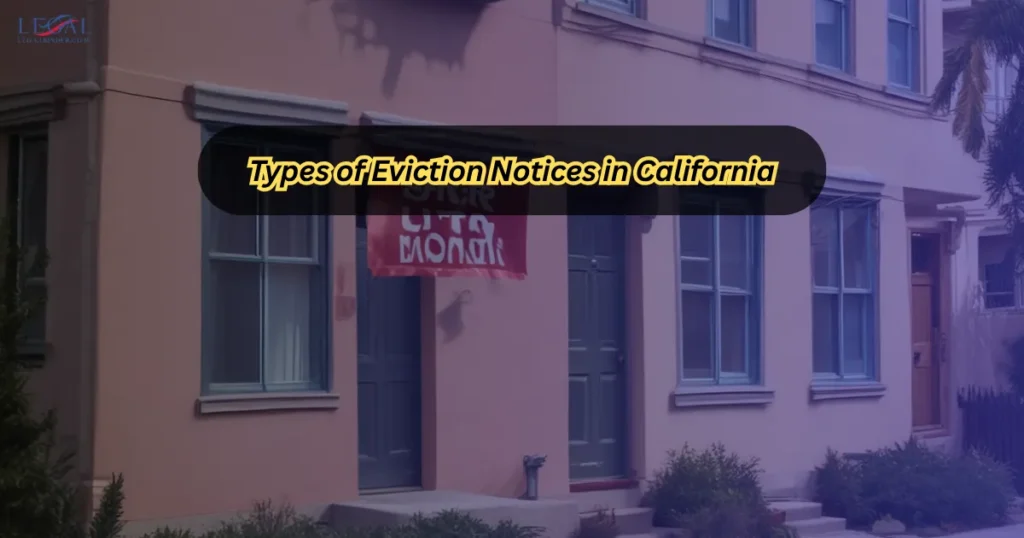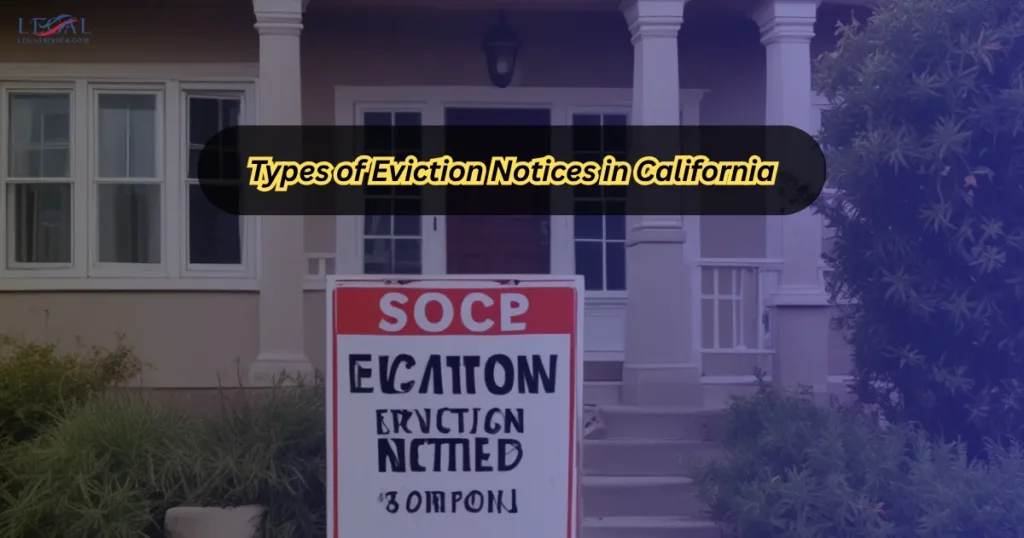Physical Address
304 North Cardinal St.
Dorchester Center, MA 02124
Physical Address
304 North Cardinal St.
Dorchester Center, MA 02124

Types of eviction notices in California are more than pieces of paper—they are formal legal instruments that set the stage for ending a tenancy. As a landlord, serving the right notice in strict compliance with California law is essential to avoid delays or court dismissals. As a tenant, receiving one can be stressful, bringing urgency and uncertainty about your home. Understanding these notices, their specific purposes, and your rights under California statutes ensures that the eviction process is transparent, fair, and legally sound.

Imagine this: you own a rental property, and after months of dealing with unpaid rent or repeated lease violations, you decide it’s time to take legal action. You prepare an eviction notice, thinking you’ve done it correctly—only to have your case thrown out because the wrong type of notice was served. In California’s complex housing law landscape, precision matters. This guide will walk you through all the types of eviction notices recognized in California, their requirements, and how to handle them to achieve a positive resolution.
For comprehensive landlord-tenant resources and legal templates, visit our homepage or explore our California Eviction Law Resource Hub.
Eviction notices—and the process that follows—are governed by the California Code of Civil Procedure §1161 and related housing statutes. The notice you serve depends on the reason for ending the tenancy, the type of lease agreement, and, in some areas, local rent control ordinances.
Used when a tenant is behind on rent. Gives 3 calendar days to pay in full or vacate. This is the most common eviction notice for nonpayment of rent.
Served when the tenant violates lease terms other than paying rent. Examples include keeping unauthorized pets, causing damage, or illegal activity.
For month-to-month tenants with occupancy under one year.
For month-to-month tenants who have lived in the unit for a year or more.
For serious violations where no chance to “fix” is given—like major property damage, violent acts, or repeated lease breaches.

Can a landlord email an eviction notice?No. California eviction notices must be served physically under CCP §1162.What happens if the wrong notice is served?The eviction case may be dismissed and the process restarted.Do rent-controlled cities have different rules?Yes. Cities like Los Angeles and San Francisco often have additional protections and extended notice periods.Can tenants negotiate during the notice period?Yes. Agreements can be made to resolve issues without proceeding to court.

Understanding the different types of eviction notices in California means you can approach the process with confidence—whether you’re a landlord seeking compliance or a tenant protecting your rights. By using the correct notice, ensuring proper service, and adhering to all legal timelines, you pave the way for a fair and legally compliant resolution.
Evictions can be stressful, but with the right information and professional guidance, both parties can reach outcomes that maintain dignity and respect.
For more California eviction law tips and landlord-tenant guidance, visit our home page and start managing your property issues with the knowledge you need.